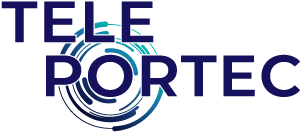Jody creates superhumans, not supercomputers. Rather than teaching humans the right buttons to push, she uses cognitive computing (AI, AR/VR, robotics, sensors, etc) to make tech understand humans. The resulting tools dramatically extend, augment, and amplify human abilities and are as easy to control as our own bodies. She might read too much Batman but in her 23-year design career, Jody has created just about everything from AI and holograms to robots and R&D. Her most notable work includes UX design for DARPA’S Big Dog, Principal Experience Designer on the HoloLens Project at Microsoft, HMI for Toyota’s AiCar, and Director of Design for Singularity University Labs.
Today, she is a Principal Design Researcher in Microsoft’s Office of the CTO, working to define the future of human-machine interface (HMI) through radical inclusion by leveraging brain-machine interface, sensors, robotics, AI, and AR/VR. She travels around the world speaking about the future of these technologies and their impact on humanity for Singularity University, The Atlantic Council, WIRED, Google, and TEDx.
Sample Topics
D4X: Design for Exponentials
If technologies are evolving exponentially, and the rate of change is accelerating, how do you create innovations that keep you ahead of the curves instead of disrupted? The design team at Singularity University has developed their own special brand of design thinking to help you do just that. Jody will explain how linear thinking produces incremental innovation, and introduce the D4X framework designed to generate moonshot innovation through Impact, Science Fiction, and Prototyping.
Industrial Revolution 4.0: Augmented Humans and the Future of Work
The Industrial Revolution will bring a massive disruption around the world. 3 in 5 jobs is set to be disrupted. The hardest hit will be women and low wage, low skill workers. They won’t be alone. Millions of skilled workers around the world will see a large portion of their jobs automated as well. That will create a lot of vacant jobs as “skilled work” takes on new meaning, and the remaining workers age out. It also creates a massive opportunity for augmenting low wage, low skill workers to do much more advanced tasks with next to no training. To start, we must create new computing tools powerful enough to do those more advanced tasks, but simple enough that anyone could pick it up and rapidly become expert. Jody will discuss how to leverage radical inclusion, augmentation, and ergonomics to build these tools.
SciFi vision of the future: use science fiction as a strategic tool to extend our horizon and plan backwards for our next steps towards the future
Tell your story like a science fiction writer and ask hard questions. Use the storytelling guide to articulate your vision of your future business and role. Work backwards from your future world vision. Establish your plan step-by-step on a reversed timeline. What will need to be true? What are key activities, developments & milestones?
Industry 4.0: The Era of Human + AI Collaboration
We are on the precipice of a socio-cultural revolution so significant it will deliver the impact of all previous phases of the Industrial Revolution combined. It will more likely be referred to as the Autonomous Revolution because it will usher in an era of real-time Human and AI collaboration that will increase productivity along all metrics: efficiency, human ingenuity, and new capabilities. It is difficult to comprehend its potential impact from today’s vantage point in the “mainframe” era of AI: it’s costly, centralized, and requires a large team of specially trained technicians, limiting its power to the solving of critical corporate, institutional, and global problems on a grand scale. But the seeds for the disruptive democratization of AI and Autonomy are already present. Today’s computing is distributed, ubiquitous, smaller, faster, multi-sensory, and operates on natural language. All that is lacking is a shift in the human-machine interface driven by a new mental model such as the PC brought to the mainframe for these technologies to become the everyday tools used around the globe for everything from manufacturing to children’s entertainment. Let’s talk about what that will be.












